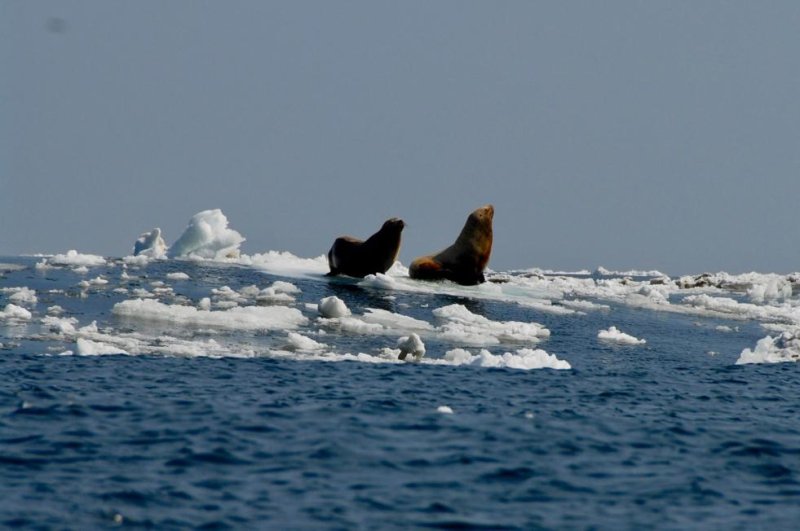New research suggests melting sea ice helped a deadly virus spread from marine mammals in the Atlantic to population in the Pacific. Photo by NOAA Fisheries/Polar Ecosystems Program
Nov. 7 (UPI) -- New research suggests the loss of sea ice in the Arctic is aiding the spread of a deadly virus among marine mammals.
In 2002, the phocine distemper virus, or PDV, infected and killed thousands of harbor seals in the North Atlantic. Two years later, scientists identified the virus in northern sea otters in Alaska.
The latest research, a 15-year study published Thursday in the journal Scientific Reports, suggests shifting sea ice dynamics in the region enabled increased contact between Arctic and sub-Arctic seals, allowing the virus to spread from the Atlantic to the Pacific.
"The loss of sea ice is leading marine wildlife to seek and forage in new habitats and removing that physical barrier, allowing for new pathways for them to move," study co-author Tracey Goldstein, associate director of the One Health Institute at the University of California-Davis School of Veterinary Medicine, said in a news release. "As animals move and come in contact with other species, they carry opportunities to introduce and transmit new infectious disease, with potentially devastating impacts."
Between 2001 and 2016, scientists tested dozens of marine mammals, including seals, northern fur seals, Steller sea lions and northern sea otters, for the presence of phocine distemper virus.
Researchers used satellite images to monitor the presence of open water routes from the North Atlantic to North Pacific oceans. Peaks in infection rates in 2003 and 2009 corresponded with significant reductions in the Arctic sea ice extent.
"As sea ice continues its melting trend, the opportunities for this virus and other pathogens to cross between North Atlantic and North Pacific marine mammals may become more common," said Elizabeth VanWormer, the study's first author and a former UC Davis researcher, now an assistant professor at the University of Nebraska, Lincoln. "This study highlights the need to understand PDV transmission and the potential for outbreaks in sensitive species within this rapidly changing environment."















